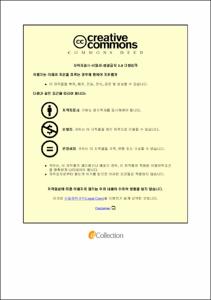자동차용 휘발유의 연소범위 및 활성화 에너지에 관한 연구
- Alternative Title
- A Study on the Combustion Range and Activation Energy of Gasoline for Motor Vehicle
- Abstract
- 본 연구는 자동차용 휘발유의 발화 특성을 파악하기 위하여 폭발범위, 자연발화온도 및 순간발화온도를 측정하였으며, 휘발유의 위험성을 파악하기 위하여 활성화 에너지를 구한 결과 다음과 같은 결론을 얻었다.
1) 산소농도 21 %일 때 폭발하한계 1.3 %와 폭발상한계 7.3 %를 측정
하였으며, 산소의 농도가 감소할수록 폭발하한계는 변화가 없으나,
상한계는 크게 감소하였다.
2) 공정의 안전운전을 하기 위한 최소산소농도(MOC)는 10.9 %를 구하였다.
3) 시료량의 변화에 따른 자연발화온도를 구한 결과 휘발유 100∼125
㎕에서 최소발화온도는 동일한 온도인 407 ℃를 구하였다.
4) 최소발화온도의 시료량인 125 ㎕에서 온도를 상승시켜 1 sec가 되는
순간발화온도는 549 ℃를 구하였다.
5) 최소발화온도를 구한 시료량으로 온도를 상승시켜 발화할 때까지의
지연시간과의 관계로부터 활성화 에너지를 구한 결과 16.10 J/mol를 구하였으며 상관계수(r2)는 0.998이었다.
In this study, the explosive limit, autoignition temperature and instantaneous ignition temperature of gasoline for cars were measured to identify its ignition characteristics, and the activation energy was estimated to determine the hazard of gasoline. The results are as follows.
1) At the oxygen concentration of 21 %, the lower explosive limit was measured to be 1.3 % and the upper explosive limit 7.3 %. With decreasing oxygen concentration, the lower explosive limit did not change while the upper explosive limit decreased.
2) The minimum oxygen concentration (MOC) for the safe operation of the process was estimated to be 10.9 %.
3) Autoignition temperatures according to the varied sample quantity were measured, and an identical temperature of 407 ℃ was obtained as the lowest ignition temperature for all the gasoline quantities of 100∼125 ㎕.
4) The instantaneous ignition temperature of the sample with the quantity of 125 ㎕ at 1 second after increasing the temperature
from the lowest ignition temperature was measured to be 549 ℃.
5) The activation energy was calculated from the correlation between the ignition temperature and the ignition delay time, which was the time elapsed for the sample to ignite upon increase of temperature with the sample quantity used for measuring the lowest ignition temperature. The calculated activation energy was 16.10 kcal/mol, and the correlation coefficient (r2) 0.998.
- Issued Date
- 2018
- Awarded Date
- 2018. 8
- Type
- Dissertation
- Publisher
- 부경대학교
- Alternative Author(s)
- GO SEUNG JO
- Affiliation
- 부경대학교 산업대학원
- Department
- 산업대학원 소방공학과
- Advisor
- 최재욱
- Table Of Contents
- 1. 서 론 1
2. 이 론 적 배 경 4
2-1. 열발화 이론 4
2-1-1. Semenov 이론 4
2-1-2. Frank-Kamenetskii 이론 8
2-2. 기체 혼합물의 상태 방정식 10
2-3. 자연발화 이론 13
2-4. 발화지연시간 15
2-5. 활성화 에너지 18
3. 실험장치 및 실험방법 20
3-1. 실험시료 20
3-2. 실험장치 22
3-2-1. 폭발한계 22
3-2-2. 자연발화온도 26
3-3. 실험방법 33
3-3-1. 폭발한계 측정 33
3-3-2. 최소자연발화온도 측정 35
3-3-3. 발화지연시간 및 순간발화온도 측정 방법 37
4. 실험결과 및 고찰 38
4-1. 산소농도에 따른 폭발범위 38
4-2. 최소자연발화온도 42
4-3. 발화지연시간 및 순간발화온도 측정 44
4-4. 활성화 에너지 46
5. 결 론 49
Nomenclature 51
Greek Letters 52
참 고 문 헌 53
Abstract 58
- Degree
- Master
- Files in This Item:
-
-
Download
 자동차용 휘발유의 연소범위 및 활성화 에너지에 관한 연구.pdf
기타 데이터 / 681.74 kB / Adobe PDF
자동차용 휘발유의 연소범위 및 활성화 에너지에 관한 연구.pdf
기타 데이터 / 681.74 kB / Adobe PDF
-
Items in Repository are protected by copyright, with all rights reserved, unless otherwise indicated.